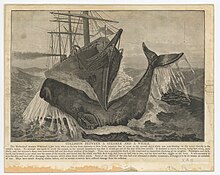
Cunard is a British shipping and cruise line based at Carnival House at Southampton, England, operated by Carnival UK and owned by Carnival Corporation & plc. Since 2011, Cunard and its three ships have been registered in Hamilton, Bermuda.

An ocean liner is a type of passenger ship primarily used for transportation across seas or oceans. Ocean liners may also carry cargo or mail, and may sometimes be used for other purposes. Only one ocean liner remains in service today.
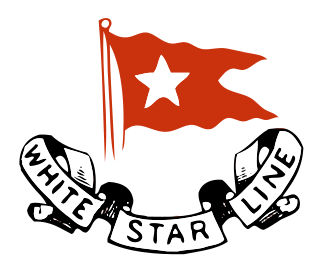
The White Star Line was a British shipping line. Founded out of the remains of a defunct packet company, it gradually rose up to become one of the most prominent shipping companies in the world, providing passenger and cargo services between the British Empire and the United States. While many other shipping lines focused primarily on speed, White Star branded their services by focusing more on providing comfortable passages for both upper class travellers and immigrants.

Sir Arthur Henry Rostron, KBE, RD, RNR was a British merchant seaman and a seagoing officer for the Cunard Line. He is best known as the captain of the ocean liner RMS Carpathia, when it rescued the survivors from the RMS Titanic after the ship sank in 1912 in the middle of the North Atlantic Ocean.
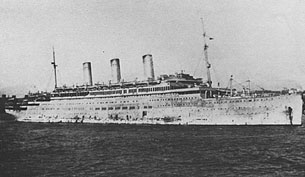
SS Justicia was a British troop ship that was launched in Ireland in 1914 and sunk off County Donegal in 1918. She was designed and launched as the transatlantic liner Statendam, a new flagship for the Holland America Line (NASM), but the outbreak of First World War delayed her completion. In 1915 NASM agreed to let the United Kingdom acquire her and have her completed as a troop ship.

SS Adriatic was the first of two White Star Line ocean liners to carry the name Adriatic. The White Star Line's first four steamships of the Oceanic-class, the met with great success in the trans-Atlantic market, and the line decided to build two more. The first of these was the SS Adriatic, which was built by Harland and Wolff and launched on 17 October 1871; the second was the SS Celtic.

RMS Carmania was a Cunard Line transatlantic steam turbine ocean liner. She was launched in 1905 and scrapped in 1932. In World War I she was first an armed merchant cruiser (AMC) and then a troop ship.

The Inman Line was one of the three largest 19th-century British passenger shipping companies on the North Atlantic, along with the White Star Line and Cunard Line. Founded in 1850, it was absorbed in 1893 into American Line. The firm's formal name for much of its history was the Liverpool, Philadelphia and New York Steamship Company, but it was also variously known as the Liverpool and Philadelphia Steamship Company, as Inman Steamship Company, Limited, and, in the last few years before absorption, as the Inman and International Steamship Company.
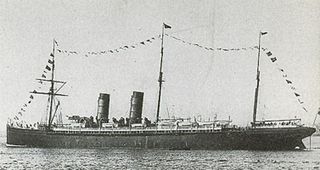
RMS Umbria and her sister ship RMS Etruria were the last two Cunard Line ocean liners that were fitted with auxiliary sails. Umbria as the last express steamship to be built for a North Atlantic route with a compound engine. By 1885, the triple expansion engine was the almost universal specification for newly built steamships. John Elder & Co. built Umbria in Govan, Glasgow in 1884. Umbria and her running mate Etruria were record breakers. They were the largest liners then in service, and they plied the Liverpool – New York City route. Umbria was launched by the Honourable Mrs. Hope on 25 June 1884 with wide press coverage, because she was the largest ship afloat, apart from Great Eastern, which by that time was redundant.

SS Abyssinia was a British mail liner built in 1870, and originally operated by the Cunard Line on the Liverpool–New York route. She later served the Guion Line on the same route and the Canadian Pacific Line in the Pacific. In December 1891, Abyssinia was destroyed mid-Atlantic without loss of life by a fire that started in her cargo of cotton, further highlighting the danger in carrying both cotton and passengers on the same ship.

MV Georgic was the last ship built for the White Star Line before its merger with the Cunard Line. Built at Harland and Wolff shipyard in Belfast, she was the running mate of MV Britannic. Like Britannic, Georgic was a motorship, and not a steamer, fitted with a diesel powerplant. At the time of her launch in 1931, she was the largest British motorship.
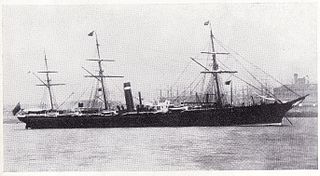
City of Paris was a British passenger liner operated by the Inman Line that established that a ship driven by a screw could match the speed of the paddlers on the Atlantic crossing. Built by Tod and Macgregor, she served the Inman Line until 1884 when she was converted to a cargo ship.

SS Lapland was a steam ocean liner built in Ireland for the Belgian Red Star Line, as Red Star's flagship, similar in appearance to the fellow liners SS Samland, SS Gothland and SS Poland, but far larger. She was a half sister to White Star Line's "Big Four." They were similar in many ways, such as the island bridge, 4 masts, 2 funnels. But Lapland had a less luxurious interior.

Scotia was a British passenger liner operated by the Cunard Line that won the Blue Riband in 1863 for the fastest westbound transatlantic voyage. She was the last oceangoing paddle steamer, and as late as 1874 she made Cunard's second fastest voyage. Laid up in 1876, Scotia was converted to a twin-screw cable layer in 1879. She served in her new role for twenty-five years until she was wrecked off of Guam in March 1904.

Lavia was a cruise ship that caught fire and sank in Hong Kong Harbour in 1989. She was built for Cunard White Star Line in 1947 as the cargo liner Media. In 1961 she was sold to Italy, rebuilt as an ocean liner and renamed Flavia. In 1969, she was refitted as a cruise ship and renamed Flavian. In 1982 she was sold to Panama and renamed Lavia. She was undergoing a refit when the fire occurred. The damage to her was so great that she was scrapped.
Yelkenci was a 7,052 GRT refrigerated cargo ship which was built in 1943 for the Ministry of War Transport (MoWT) as Empire Camp. She was sold in 1946 and renamed Valacia. In 1951, she was sold and renamed New York City. A further sale in 1955 saw her renamed Loch Morar. A final sale to Turkish owners saw her renamed Yelkenci. She served with them until scrapped in 1971.

The first RMS Saxonia was a passenger ship of the British Cunard Line. Between 1900 and 1925, Saxonia operated on North Atlantic and Mediterranean passenger routes, and she saw military service during World War I (1914–1918).
SS Java was a British and French ocean liner built in 1865 at Glasgow by J. G. Thompson & Co. It served for the Cunard Line. One passenger, the musician Philo Adams Otis, noted:

The Oceanic class were a group of six ocean liners built by Harland and Wolff at Belfast, for the White Star Line, for the transatlantic service. They were the company's first generation of steamships to serve the North Atlantic passenger trade, entering service between 1871 and 1872.


